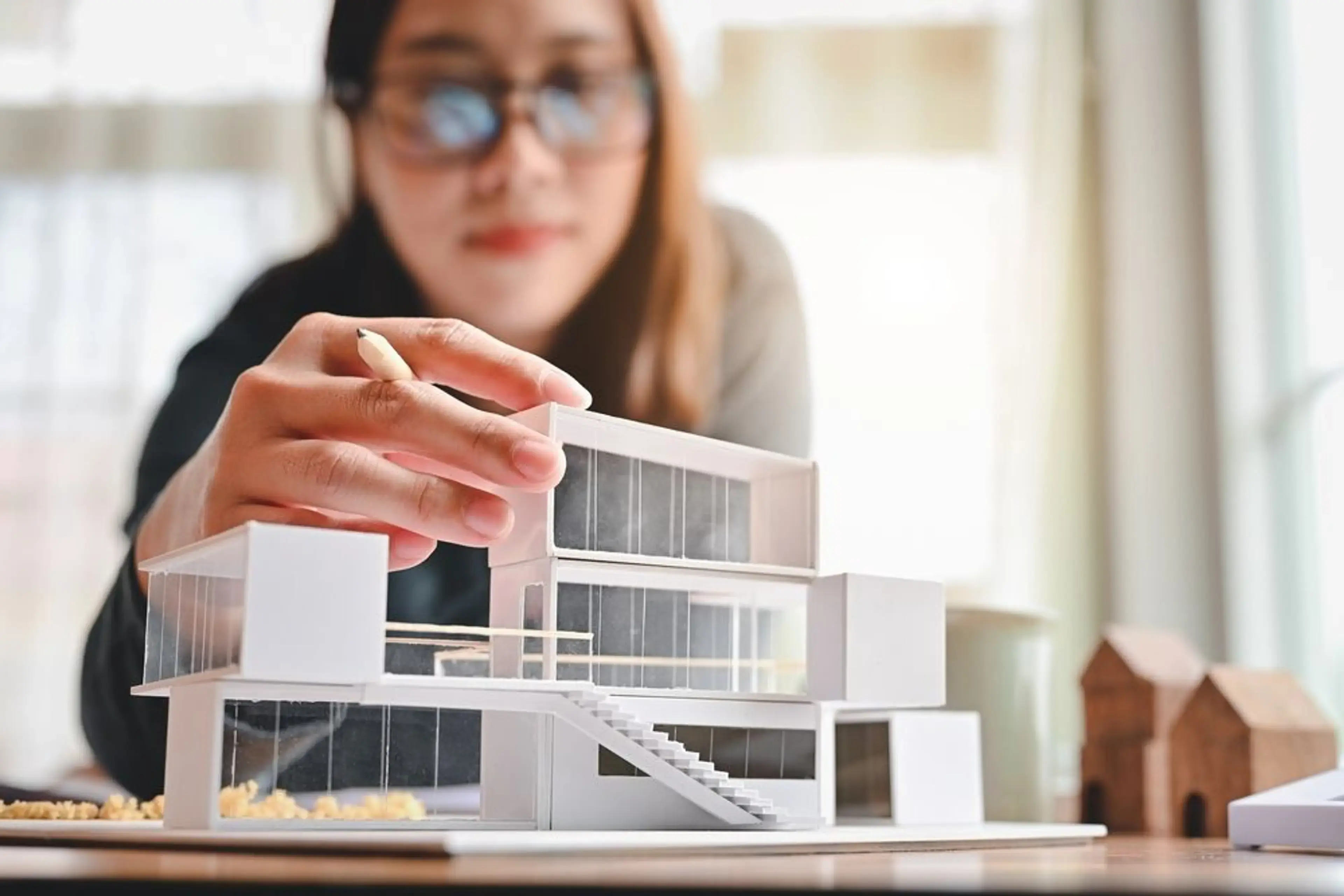Architect Career Path: Competencies, Education, and Development Guide
Architect Career Path: Competencies, Education, and Development Guide
Blog Article
Comprehending the Diverse Job Paths Available for Aspiring Architect
As an aspiring Architect, you have a world of occupation courses waiting for you. Whether you're drawn to standard style or the nuances of lasting style, there's a niche that lines up with your passions.
Traditional Design: Designing Frameworks and buildings
Traditional design concentrates on designing structures and structures that mix functionality with aesthetic appeal. As you explore this area, you'll value the detailed equilibrium in between kind and objective. You'll find out to attract ideas from historic designs, including elements like symmetry, products, and craftsmanship. Your layouts can reflect cultural heritage, showcasing regional customs while satisfying modern-day requirements.
You'll establish skills in drafting, model-making, and website evaluation, allowing you to envision and interact your concepts properly. Involving with customers, you'll need to comprehend their vision and translate it right into viable styles.
Additionally, building codes and sustainability techniques are essential in your job, ensuring your structures are eco pleasant and safe. As you expand in your occupation, you'll find opportunities in property, industrial, and even repair projects, each offering one-of-a-kind difficulties. Embracing typical design paves the means for a fulfilling job that admires the past while forming the future.
Urban Planning: Forming Neighborhoods and Public Spaces
As an aspiring Architect, you can play a vital role as a metropolitan planner, transforming just how neighborhoods operate and communicate. By utilizing neighborhood involvement methods, you'll assure that citizens have a voice fit their environment. Plus, incorporating lasting layout principles will assist develop spaces that not just satisfy today's demands however also secure the future.
Role of Urban Planners
While lots of could consider designers as the single visionaries behind buildings, metropolitan organizers play a necessary role in shaping the wider landscape of areas and public spaces. They evaluate land use, zoning legislations, and area requires to create sustainable atmospheres that improve top quality of life. By collaborating with various stakeholders, you'll assist create parks, transport systems, and suburbs that promote social interaction and availability. Urban coordinators additionally concentrate on ecological factors to consider, ensuring that developments integrate green areas and support biodiversity. Your proficiency in spatial layout and area characteristics permits you to picture future development while maintaining social heritage. In this crucial function, you'll directly influence how people experience their surroundings, making every project a chance for favorable modification.
Neighborhood Engagement Approaches
Efficient area involvement strategies are important for metropolitan organizers to assure that the voices of residents are heard and valued in the planning process. To promote significant discussion, you must focus on open discussion forums and workshops where area participants can share their concepts and concerns. By proactively listening and incorporating feedback, you'll create spaces that reflect the community's needs, ultimately leading to more sustainable and successful urban atmospheres.
Sustainable Design Principles
When designing urban spaces, incorporating sustainable layout concepts is important for producing atmospheres that flourish both ecologically and socially. You should begin by concentrating on power effectiveness, using products that lower waste and advertise recycling. Think about integrating green rooms, like parks and yards, to enhance biodiversity and improve air top quality. Advertising walkability and public transport can minimize dependence on autos, fostering a much healthier neighborhood.
Designing with water preservation in mind is likewise vital-- consider rainfall yards and permeable surfaces to take care of stormwater. Including area participants throughout the planning procedure guarantees that the rooms you create fulfill their requirements and encourage social communication. By embracing these concepts, you'll contribute to vivid, sustainable urban landscapes that profit every person.

Landscape Design: Creating Lasting Exterior Atmospheres
As you explore landscape design, you'll discover essential layout principles that develop attractive and practical outside spaces. Lasting practices play a vital role in making certain these atmospheres thrive while decreasing environmental influence. Plus, you'll locate a range of job chances that allow you to make a genuine distinction in exactly how individuals engage with nature.
Design Principles in Landscape
Recognizing style concepts in landscape architecture is vital for creating sustainable outside settings that integrate with nature. You'll require to contemplate aspects like balance, scale, and proportion to assure your layouts feel natural and welcoming. Furthermore, pay interest to seasonal modifications, creating with materials that match the environments year-round.
Lasting Practices Summary
Lasting practices in landscape design not just concentrate on visual appeals however additionally prioritize environmental health and wellness and source preservation. You can develop areas that advertise dirt health, such as utilizing natural products and exercising permaculture principles. Eventually, these techniques guarantee your styles profit both individuals and the environment for years to come.
Occupation Opportunities Expedition
With a strong structure in sustainable methods, landscape architecture provides a selection of profession paths that allow you to make a significant influence on the atmosphere. Urban organizers often collaborate with landscape architects to develop eco-friendly rooms in metropolitan settings, boosting look at here city livability. If you're passionate concerning education, take into consideration ending up being a landscape architecture instructor, inspiring future generations.
Lasting Style: Concentrating on Eco-Friendly Practices
As you discover your occupation in architecture, welcoming green practices can set you apart in an affordable field. Lasting design concentrates on developing buildings that reduce environmental effect while boosting owner well-being. By incorporating sustainable materials, energy-efficient systems, and lasting structure methods, you'll add to a greener future.
Begin by obtaining expertise of eco-friendly qualifications like LEED or BREEAM, which can boost your credentials. Take into consideration just how all-natural light, air flow, and thermal efficiency can maximize layout. Collaborate with engineers and environmental specialists to innovate remedies that decrease waste and conserve resources.
Do not neglect the significance of area involvement-- interesting local stakeholders can motivate styles that balance with the setting. As clients progressively focus on sustainability, your know-how in environment-friendly practices will certainly not just attract projects however also meet your passion for accountable style. Accept this essential facet of the occupation, and see your occupation flourish.
Historic Preservation: Safeguarding and Restoring Cultural Heritage
While you start on your architectural journey, think about the essential duty of historical preservation in keeping our cultural heritage. This area concentrates on the security and remediation of considerable structures, websites, and structures that tell the stories of our past. By engaging in historic preservation, you'll assist safeguard the architectural heritage that shapes area identity.
As a historical preservation Architect, you'll examine historic importance and examine the condition of frameworks. You'll work carefully with historians and conservationists to assure authentic repair techniques are used. This career path allows you to mix imagination with research, enabling you to make solutions that respect original products and workmanship.
Your work not just adds to sustainability by reusing existing structures but additionally fosters a sense of satisfaction within communities. Welcoming this path will aid you become a guardian of background, maintaining the stories and visual appeals that improve our lives.
Interior Design: Enhancing Indoor Spaces
Historical conservation and interior design both share a dedication to enhancing the developed setting, but they focus on various aspects. While historic conservation highlights keeping a structure's cultural and historic value, indoor style zeroes in on maximizing interior spaces for performance and visual appeals.
As a hopeful Architect, you'll locate that interior architecture enables you to blend creativity with technological abilities. You'll create rooms that not only look excellent yet additionally promote comfort and effectiveness. This area involves comprehending how light, directory color, and products interact within a room, affecting mood and functionality.
You'll service different tasks, from residential homes to industrial offices, making sure that each setting meets the requirements of its occupants. By prioritizing customer experience, you can transform interiors into functional and inspiring rooms, making a substantial impact on how individuals connect with their surroundings. Accept the possibility to enhance indoor environments and form the way individuals live and function.
Industrial Style: Combining Functionality With Appearances
Industrial style plays an essential role in creating products that perfectly mix appearances with functionality, guaranteeing that what you make use of everyday is not only aesthetically attractive but additionally functional. As an aspiring Architect, you might immerse on your own in this field, concentrating on developing everything from furnishings to consumer electronic devices. Your work entails comprehending customer requirements, materials, and producing processes, enabling you to create cutting-edge services that enhance day-to-day experiences.
In industrial design, you'll often team up with marketers, makers, and engineers, making certain that your designs are not just beautiful but likewise feasible. You'll learn to balance kind and feature, prioritizing functionality without compromising design. By honing your abilities in sketching, 3D modeling, and prototyping, learn this here now you'll be fully equipped to bring your concepts to life. This profession course offers a dynamic atmosphere where creative thinking fulfills practicality, making it a gratifying option for designers curious about forming the items of tomorrow.
Regularly Asked Inquiries
What Educational Accreditations Do I Need to End Up Being a Designer?
To end up being an architect, you'll need a specialist level in design, normally a Bachelor's or Master's. Furthermore, you'll have to finish a teaching fellowship and pass the Architect Registration Assessment to practice legitimately.
Are There Certification Needs for Different Building Profession Paths?
Yes, there're certification demands for numerous architectural courses. Architect. You'll need to pass examinations, complete teaching fellowships, and sometimes seek specialized training, depending on your picked focus, like landscape design, urban style, or historical preservation
What Software Program Skills Are Crucial for Architects Today?

How Can I Gain Practical Experience While Researching Style?
You can get sensible experience by interning at building firms, taking part in layout competitors, offering for neighborhood tasks, or teaming up with classmates on real-world tasks. These opportunities boost your skills and build useful connections in the market.
What Job Opportunities Exist Outside Traditional Design Firms?
You can discover various task opportunities outside standard style firms, like metropolitan preparation, interior decoration, landscape style, building monitoring, property advancement, and even roles in sustainability consulting. Each offers one-of-a-kind challenges and benefits.
Whether you're attracted to conventional design or the nuances of sustainable design, there's a niche that lines up with your rate of interests.When making urban areas, integrating lasting layout concepts is important for producing settings that grow both ecologically and socially.As you explore landscape design, you'll find essential style principles that develop practical and lovely exterior rooms.Understanding design principles in landscape architecture is important for creating sustainable outdoor environments that harmonize with nature.In industrial layout, you'll commonly collaborate with manufacturers, engineers, and marketing experts, making sure that your styles are not only stunning but also possible.
Report this page